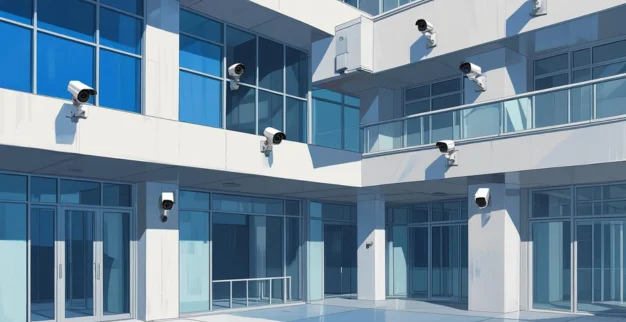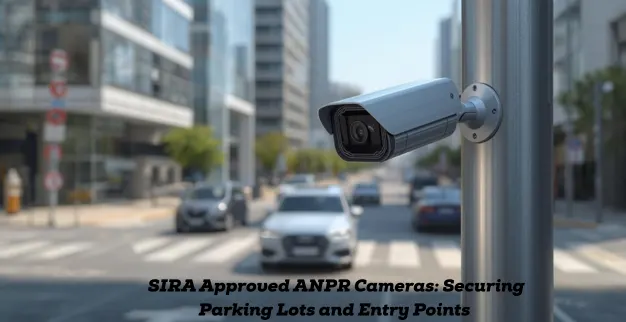CCTV Misses Crucial Angles? Fix Blind Spots Easily
By: Ganesan D
07 Aug 2025
Category: CCTV Security
No matter how many cameras you install, CCTV blind spots can leave your property vulnerable. Wandering shadows or invisible corners are where mischief often brews—especially when criminals intentionally exploit those hidden cracks in your security camera coverage. The good news? It’s entirely possible to fix CCTV blind spots—and boost your peace of mind.
1. Identify Your Blind Spots First
Start with a property walkthrough. Have someone move around key entry points—doors, windows, driveways—while you monitor the live feed. Check coverage via different devices (mobile, tablet, monitor) to catch discrepancies.
Use installation photos or blueprint overlays to map each camera’s Field of View (FOV). Cameras with standard lenses (e.g. 4 mm) have about an 80° angle, meaning anything outside that cone becomes a blind spot.
2. Choose the Right Camera Types & Lenses
Wide-angle, fisheye, and PTZ (pan‑tilt‑zoom) cameras drastically reduce blind spots. A single wide-angle camera can cover large yards; fisheye or 360° models can eliminate blind zones completely in enclosed spaces. PTZ cameras let you remotely pan and zoom to address emerging blind spots on the fly.
3. Overlap Your Camera Coverage
Overlap adjacent camera views by at least 25% or more. This ensures no gap exists between one camera’s edge and another’s starting point—and builds redundancy in case one is blocked or tampered with. Reddit users also advice to position cameras to “watch each other’s backs” so that if one is sabotaged, another captures the same scene from a different angle.
4. Optimize Height and Angle
Height matters. Mount outdoor cameras at about 8–10 feet (2.5–3 m) high. That’s high enough to deter tampering, yet angled downward enough to capture faces and license plates.
Avoid angles that are too steep—they may miss key human details—or too shallow, which invites glare or ineffective coverage.
5. Control Lighting and Reflections
Lighting conditions can create or hide blind spots. Bright backlighting or pointing a camera at a window can wash out subjects; in low-light areas, footage may be grainy and unidentifiable. Improve lighting with motion‑activated bulbs or upgrade to IR or low-light cameras that adapt to changing conditions.
Remove any reflective surfaces—mirrors, shiny walls, glossy signs—that can cause glares and distort the feed.
6. Eliminate Obstructions and Trim Foliage
Obstructions like trees, walls, garden furniture, or shifting seasonal vegetation often block crucial view zones. Trim plants, reposition objects, and clear paths so cameras have unobstructed vision.
Inside the house, avoid curtains, wall decor, or shelving that might block a hallway or stair view.
7. Use Tamper-Proof or Vandal-Resistant Mounts
Low-placed cameras are easy targets for vandals. Use robust housings or mount cameras high enough to avoid tampering. Some models come with tamper alerts when moved or obstructed. If one camera is disabled, overlap coverage means another will capture what the attacker intended to hide.
8. Clean and Maintain Regularly
Dirty or fogged lenses can seriously reduce coverage clarity. Routine maintenance—cleaning lenses, tightening mounts, checking wiring—ensures your system continues to function as expected. Also factor in seasonal maintenance: the layout of foliage, sun angle, or construction nearby may create blind spots over time.
9. Test and Re-test During Day and Night
What looks clear during daylight may reveal blind spots at night. Test coverage at varying times and lighting conditions. Do walk‑throughs to confirm coverage, then adjust angles or additional cameras as needed.
10. Integrate Smart Features: Alerts & Remote Monitoring
Link your CCTV with motion sensors or external alarms. Smart features like auto-zoom tracking, push alerts, or activity zones help pinpoint intrusions even in tricky zones. Being able to access live feeds remotely lets you notice gaps or respond instantly.
Wrap-Up: From Blind Spots to Full Vision
Whether your CCTV system is for home, office, or retail, security camera coverage is only as strong as its weakest blind spot. Fortunately, with smart placement, overlapping views, the right equipment, and ongoing testing, you can fix CCTV blind spots efficiently and affordably.
By choosing wide-angle or PTZ cameras, mounting them at optimal height, overlapping fields of view, managing lighting, and committing to routine maintenance, you transform a vulnerable system into a vigilant one. Your cameras stop being gaps in your security—and become reliable watchers over everything you care about.



